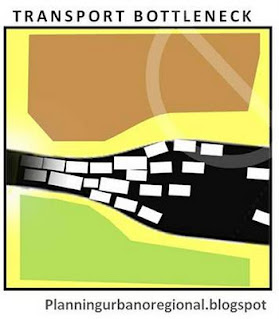By - Anoop Jha
Transportation viscosity or transit viscosity is a resistance faced by commuters while travelling collectively in any given urban or regional setting; it can be sophisticated qualitative criteria to understand and judge the congestion level of any city and can help improve the life of city. Transit viscosity is made of many tangible and intangible elements like, No. of Vehicle per unit length of Road, Surface Material, Condition & Texture of Road, Street Edge, Manmade or Natural Obstructions on Road, Ongoing Development work in Process in the corridor, Ongoing O & M of Road of other infrastructure concealed within the road or corridor, Transport Signage simplicity, visibility and condition and location, Driving Behavior of individuals, pedestrian behavior etc. Most of the characteristics stated above are related to socio-economic condition of city, efficiency of administration and education level of community. Role of planners here is to understand the nature and reason of these frictional elements of transportation which causes transit viscosity and to plan accordingly to reduce the friction.
Understanding Qualitative aspect of Transportation
 |
| Transport Viscosity and bottleneck |




